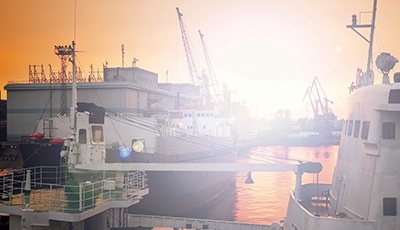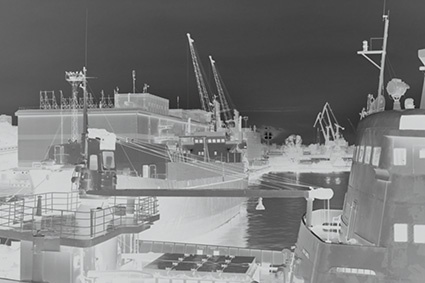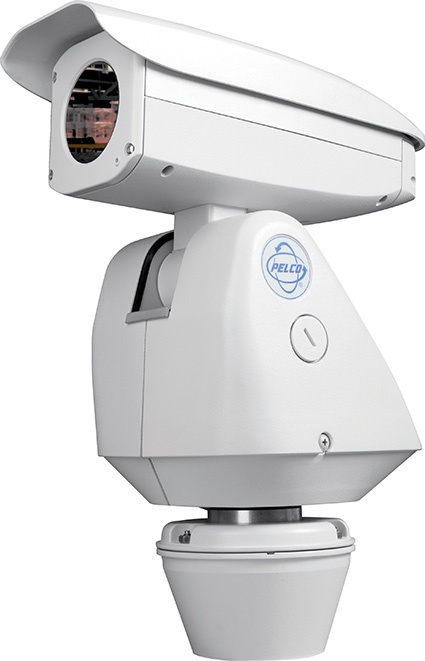Thermal Imaging Technology for Unprecedented Port Security
Millions of tons of cargo. Billions of dollars in goods. The activity of a small city with miles of perimeter fencing, uneven infrastructure, blind spots, and ever-changing weathe...



Millions of tons of cargo. Billions of dollars in goods. The activity of a small city with miles of perimeter fencing, uneven infrastructure, blind spots, and ever-changing weather conditions. Port security is no small task, yet increasingly, security operators are asked to assume more responsibilities with static, if not shrinking, budgets. As drivers of a global economy, the demands placed on port security continue to grow and with them, the challenges and complexity increase exponentially.
Leveraging Existing Infrastructure
Unlike traditional retail, commercial, and many industrial applications, ports present unique security issues that must be anticipated and addressed. Typically, high-security installations rely on a variety of solutions, including video security and surveillance. The combination of legacy analog and more modern IP-based video cameras, recording and video management systems, PSIM, analytics, and more provide a digital extension of security personnel.
Port security, however, is anything but typical. From miles of unguarded, unlit perimeters to ever-changing lighting and weather conditions, traditional video security has a difficult time providing the comprehensive intelligence demanded by such a high-security facility.
The Thermal Advantage
Once restricted to the military due to prohibitive cost, thermal imaging is an increasingly relied upon technology for an ever-growing array of security - as well as process and operations management - applications. As price points have dropped, integration of thermal technology into today's video security and surveillance camera systems has become more prevalent, providing a wealth of information and functionality previously unavailable.
As David Dorn, applied technology engineer manager at Pelco by Schneider Electric said, "Due to significant improvements in fabrication technologies, we are seeing dramatic price reductions in those thermal imaging core components, image sensors and lenses necessary to build thermal cameras. In the last 18 months, for example, we have seen a 2x cost factor reduction in the image sensors themselves. This means that thermal technology is no longer confined to high-end military and government applications."
Because many applications that rely on video security are challenged by a number of external, uncontrollable factors, including ambient light and weather, thermal imaging has cemented its position as a must-have technology to detect and observe the persons and vehicles on and near a facility - information necessary to make immediate, informed decisions.
How it Works
Whereas a visible-light camera uses light reflected off objects to build an image, thermal imaging cameras capture an object's emitted heat to provide a high-contrast image - eliminating the need for any light source.
Using special materials like Germanium that transmit thermal energy, lenses focus a thermal image onto a thermal image sensor. Microbolometers, the sensors used to create a thermal image, feature either Vanadium Oxide or Amorphous Silicon coatings on a silicon wafer. "Similar to CCD or CMOS imagers in visible-light cameras, the microbolometer has an array of pixels with each pixel receiving heat energy proportional to the heat energy present in the scene at that point," Dorn said. "Because today's advanced thermal cameras can detect even minute differences in temperature, visual information that was never before available is now at a security operator's fingertips."
The thermal contrast among objects in low-light and no-light conditions provides the information necessary to quickly make informed decisions - information that standard visible light cameras cannot deliver. And thanks to this technology, thermal imaging is also a powerful tool for applications beyond security - providing the capabilities to spot leaks, ruptures, or hot spots across bridges, dams, refineries, and power plants.
For many security applications, the ability to detect if a person or vehicle has entered the scene is critical. Thermal excels in this regard since the temperature of a person or vehicle is typically quite different than the background temperature of the scene. This makes people and vehicles easy to detect in thermal images, even from very long ranges. The ability to accurately and reliably detect people and vehicles is also very useful for video analytics.
Even in complete darkness or in areas obscured by fog, foliage, or other obscurants, thermal cameras alert security personnel to potential threats that may not be captured by a standard visible light camera. And this is nowhere more important than port applications, where security personnel are faced with a variety of challenges, from distant, poorly lit perimeters to unguarded waterfront access. Thermal imaging is quickly becoming a common, tried, and trusted technology, independent of or complementary to visible light cameras, to ensure 24-hour protection.
Lower Installation and Operating Costs
Interestingly, although thermal cameras still typically cost more per unit than a traditional visible camera, deployment of a thermal imaging solution in a port environment can be much more cost effective than traditional video. For one, thermal cameras have longer detection ranges, necessitating the use of fewer units, overall. Additionally, because thermal cameras do not need lighting, their use can eliminate the need for installation of light poles and their associated infrastructure. Finally, with operating costs continually under pressure, thermal cameras are attractive because they can eliminate the ongoing electrical costs of powering lights for security every night of the year.
Video Analytics
A major advantage of thermal imaging is in its ability to deliver high-contrast images in the most challenging lighting conditions. Since thermal imaging uses heat from objects to form its image, no illumination source is needed. This means that thermal imaging works equally well in all lighting conditions - day or night under normal light, low light, or even no light conditions.
Importantly, thermal cameras provide an optimal platform for the use of video analytics. Since visible-light cameras are dependent upon reflected light, image quality and accuracy can degrade throughout a 24-hour period due to shadows, inconsistent lighting, glare, and other lighting effects over which neither security operators nor technology have control. But since thermal cameras capture an object's thermal emission, it ignores common light conditions (whether too little or too much), which challenge traditional video analytics. The high-contrast image enables the predictable use of analytics with extremely low false-alarm rates at all hours of the day.
Thermal cameras, especially those with built-in, integrated analytics, enhance the flexibility and performance of any security system. The ability of thermal imaging to immediately detect threats - typically before even the human observer - coupled with the automatic notification of suspicious activity, makes you more prepared than ever to keep their property secure.
A popular example of such a deployment is virtual fencing and automated perimeter security, taking advantage of "trip wire" and other behavioral analytics. A thermal camera looking down a fence line with a virtual trip wire, people-detection analytic employed, will give a very accurate alarm if someone crosses the fence line over a long distance, day or night, under any lighting conditions. This "thermal fence" solution is much more accurate and cost effective than existing visible camera solutions, traditional deployments of microwave detectors, and even existing motion/perimeter proximity sensors.
"The ability to deploy thermal withanalytics in such a cost-effective fashion opens up many newapplications for this technology," Dorn said. "It's exciting to bring technology that was once limited to high-end military applications to mainstream video security."
Sarix TI: The Premier Thermal Imaging Camera System
Sarix TI is the first thermal camera specifically designed to be an integrated part of any end-to-end video security solution. Completely operable with both Pelco and third-party video management and recording systems, Sarix TI is quite simply, the evolution of thermal imaging. Available in both IP, analog, fixed, and pan/tilt models, Sarix TI is as easy to install and use as any traditional dome camera. Bringing an all-digital design with advanced thermal imaging capabilities to mainstream video security applications, the result is an affordable camera system that delivers high-quality video, as well as the power and flexibility that only comes with thermal imaging technology.
- Non-military thermal camera
- Sun-safe amorphous silicon sensor
- Plug and play with the industry's most common recording and video management systems
- Fully integrated sensor, camera, enclosure, and pan/tilt system
- Fixed and pan/tilt models integration into any IP or analog system
- Embedded analytics
- Full and reduced frame rate options
- Multiple resolution options, up to 640x480px
- Three-year warranty
most read

The Benefits of AI-based Video Surveillance Solutions for Sports Venues
Dallmeier Interview: Artificial intelligence Makes Stadiums Smarter

Video security & video management: the winners of category C at the GIT SECURITY AWARD 2026
GIT SECURITY AWARD 2026: Video Security & Video Management - an overview of the most innovative solutions

Integrated and Futureproof: Traka’s Next Chapter
Interview with Stefni Oliver on Traka’s Vision for the Future


GIT SECURITY AWARD 2026 - The winners have been announced!
GIT SECURITY AWARD 2026: The best safety and security solutions of the year - now an overview of all winners







